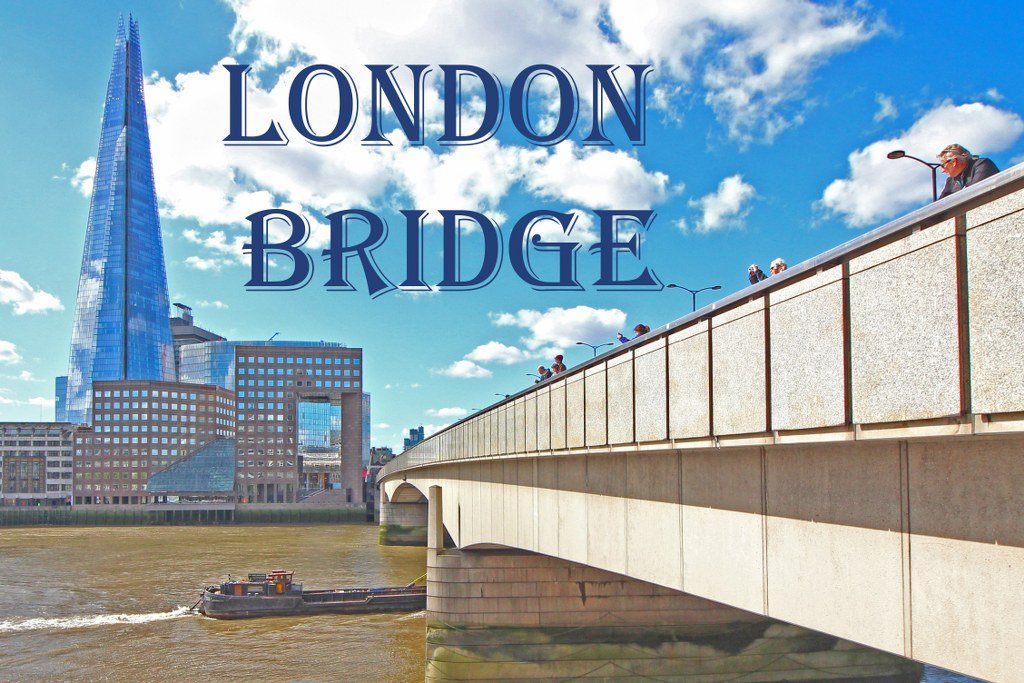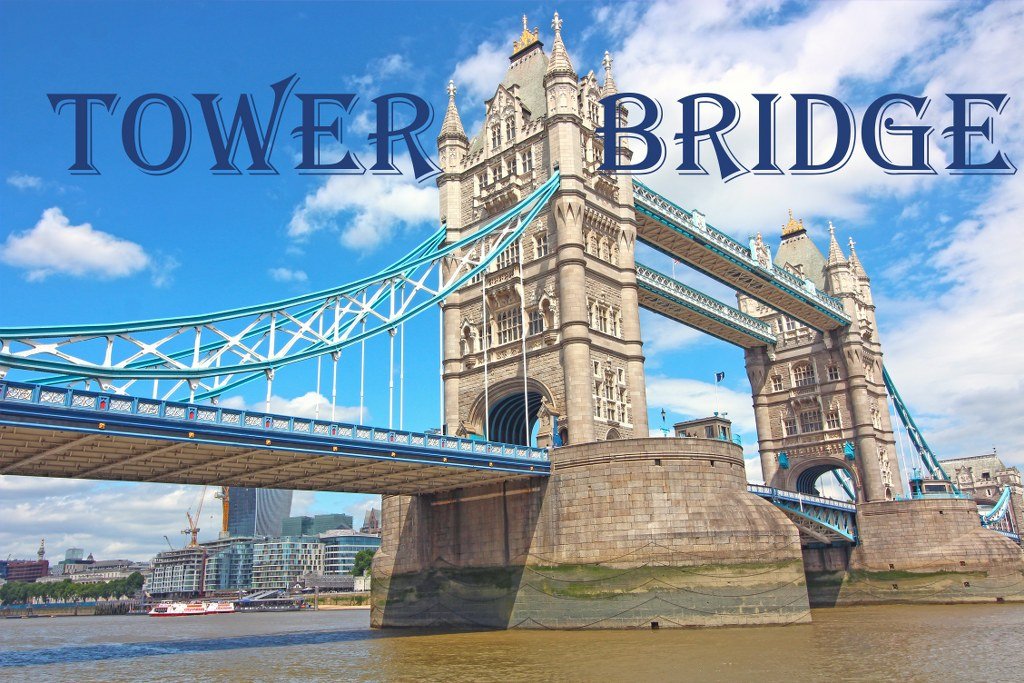13 (free) things to see near LONDON BRIDGE in less than an hour (self-guided London Bridge walking tour with a map)
To do this London Bridge walk, you not only need a good pair of shoes.
London Bridge and the City of London (2022). Photography: Zuzanna/WalkMeBlog
You also need a good stomach, as after seeing a few iconic London skyscrapers and many London bridges, you will dive into the dark world of skeletons and dead bodies, ever-present in this part of London.
Let's see it then, what is there to see near London Bridge…
Distance to cover: 2.0 miles (3.2 km)
Next to each tourist attraction, you will find a map with its location, and below, you can see a map of the entire London Bridge walking tour.
LONDON BRIDGE WALKING TOUR MAP
If you click on the map, a new window will open for live navigation in the field.
13 THINGS TO SEE NEAR LONDON BRIDGE
1. Egg-frying skyscraper and Sky Garden (the Walkie-Talkie building)
The Walkie-Talkie building in London (2019). Photography: Zuzanna/WalkMeBlog
This walk begins in the London hot spot, literally.
It starts in the place where the Great Fire of London began over 350 years ago and where today cars get occasionally melted by... skyscrapers.
20 Fenchurch Street (also called the Walkie-Talkie building) is easy to recognize with its distinctive curved shape.
This 37-story structure was supposed to provide new office space for the City (as skyscrapers boringly do).
However, first, it attracted the attention of Londoners for a very different reason.
On the sunny days of 2013, you could see office workers (Londoners in suits) carrying the frying pans in the streets.
They were frying the eggs on the paving of nearby Eastcheap Street with (very much unwanted) solar energy collected by the Walkie-Talkie's curved elevation (see more about that here).
Apart from frying the eggs, the skyscraper also managed to melt the parts of (worth 155k at the time) Jaguar parked in the unlucky spot.
Long story short, 10 mln pounds (spent on new glass) fixed the developer's problem. And took away forever from us what could have been a popular tourist attraction.
Today the building offers free access (if you book a free ticket in advance) to the Sky Garden and the panoramic view of London.
Link to the website where you can book your FREE ticket to the SKY GARDEN at 20 Fenchurch Street
2. The smallest sculpture in London
Can you find the smallest sculpture in London at Philpot Lane?. Photography: Zuzanna/WalkMeBlog
No 2 on our map is the very hard-to-find sculpture of two mice eating the cheese on Philpot Lane.
This is the smallest London sculpture. It commemorates the argument between two builders in the 19th century over… the cheese sandwich.
The heated argument led the hungry workers to death.
The death was not caused by hunger but by the fall from the scaffold during the fight. The cheese sandwich ended up being eaten by mice.
True or not, an interesting story it is!
3. How baking (going terribly wrong) changed London forever (Pudding Lane and The Monument to the Great Fire of London)
Pudding Lane in London (2022). Photography: An/London By An
A Pudding Lane is a small street near Monument Station. It looks like thousands of other small streets in London. However, the events at the bakery located here 350 years ago (no signs of it today) changed London forever.
Here, on the 2nd of September 1666, the Great Fire of London had started.
This apocalyptic event (which turned 4/5 of wooden London into dust) is commemorated with The Monument to the Great Fire of London.
A 62m high, climbable tower with a spiral staircase was completed in 1677 in the aftermath of the fire.
Today, anyone willing to take 311 steps (and pay for the ticket) can see the panoramic view of London through an iron cage.
The safety feature was added to the structure in 1842, after six suicides (half of them committed by bakers!).
4. Church of Saint Magnus-the-Martyr and medieval entrance to London
Church of Saint Magnus-the-Martyr in London (2022). Photography: Zuzanna/WalkMeBlog
Church of St Magnus the Martyr is easy to miss church, located only steps away from London Bridge.
If you are keen on churches, you will not need convincing to step in (it is one of Wren's* churches after all!).
*acclaimed English architect, responsible for the recreation of 52 London churches after the Great Fire of London in 1666, with St Paul’s Cathedral being his masterpiece
Otherwise, below you can find three not church-like reasons for a visit.
Firstly, the archway of this church (visible today) was the extension of the historic Old London Bridge.
It was used for centuries as a pedestrian entrance to London (the bridge was located roughly 30 meters to the east of its current location).
Secondly, the church holds a 2000-year-old piece of wood remembering the Roman times and potentially the very first London Bridge.
And some stone remains of old medieval London Bridge.
The third and the main reason you should definitely see this church is the 20ft-long detailed model of the 13th-century version of Old London Bridge displayed inside the church.
Model of Old London Bridge inside the church of Saint Magnus-the-Martyr. London (2022). Photography: Zuzanna/WalkMeBlog
And even if you decide not to include this gem on your trip to London, perhaps you will enjoy seeing the church online.
The website offers a free walk around this symbolic structure from the comfort of your chair, wherever you are. Kind of cool, too.
5. London Bridge and the biggest antique ever sold
The northern side of London Bridge (2019). Photography: Zuzanna/WalkMeBlog
For about 18 centuries, the place where the current London Bridge sits (more or less) was the only place in London where people could cross the Thames on foot (pretty special, if you ask me!).
But...
The London Bridge we can see today is one of the newest bridges in London (it was built in 1973), and it should be called London Bridge (at least!) 1.10.
Yea, that's right. They were many London Bridges before.
The first one (and pretty important) was built by the Romans 2000 years ago and gave life to London.
Many bridges later (around 1211), Londoners had built something in the shape of Ponte Vecchio in Florence. Just Longer. And busier.
Part of the model of Old London Bridge. The church of Saint Magnus-the-Martyr (2022). Photography: Zuzanna/WalkMeBlog
It was like a small city on the bridge.
You could pray (in the Chapel of St Thomas on the Bridge), shop (over 100 shops were placed at the top of the structure), and even use a toilet.
It was one of the busiest places in London, comparable to today's Oxford Street. During the peak hours, passing the congested bridge took about an hour.
(It is hard to believe that tradition of wasting time in traffic goes that far back!)
London Bridge and the Shard as seen from the northern side of the river (2017). Photography: Zuzanna/WalkMeBlog
For a long time, Londoners (allegedly) thought that the key to building a lasting bridge was to bury alive people underneath it (!!!).
This 'recipe' for bridge longevity did not help the next version of the London Bridge, the so-called New London Bridge.
After only 140 years ‘in action’, it was sinking and needed to be replaced.
The stairs and the archway-remaining signs of the previous London Bridge (2022). Photography: Zuzanna/WalkMeBlog
The majority of this bridge was eventually sold to America and became the biggest antiques ever sold.
A few signs of it are still visible today on the south side of the river.
Two remaining stones from the previous London Bridge are used currently as benches (2022). Photography: Zuzanna/WalkMeBlog
The money from the sale was spent on the bridge we can see today.
The modern London Bridge has a rather dull design and (weirdly enough), is often confused with Tower Bridge. Even if they could not be any more different.
Even Google gets it wrong, sometimes!
Ok, enough about London Bridge.
Let's see the spikes!
6. Boiled heads on the spikes or... welcome to London! (Southwark Gateway Needle)
(link to the location)
Southwark Gateway Needle at London Bridge (2022). Photography: Zuzanna/WalkMeBlog
The Stone Gate (part of Old London Bridge) was the first thing visitors coming to London from the south could see.
And for over 300 years, it was used by the authorities to make a statement.
Southwark Gateway Needle (2022). Photography: Zuzanna/WalkMeBlog
Pre-boiled (and dipped in the tar) heads of traitors beheaded at the Tower of London were prominently displayed on the spikes above this gate to keep (alive) citizens on good behavior. A picture is worth a thousand words, I guess.
Southwark Gateway Needle does not have any clear information on display confirming (or denying!) any relation to this grim tradition.
However, it looks like a spike and is located roughly where the Stone Gate was. And this will do for me.
7. The Shard
(link to the location)
The Shard in London (2015). Photography: Zuzanna/WalkMeBlog
The second London Bridge spike on this walk has 72-stories, and it is one of the most recognizable skyscrapers in London - the Shard.
A (rather extreme) glass addition to this historical part of London was completed just on time for the London Olympics in 2012.
It does offer a viewing gallery of London at the height of 244m above the ground.
This is probably the best way to see London quickly, but it comes at the cost of a ticket.
8. The museum of... TORTURE (the Clink Prison Museum)
(link to the location)
The sign outside the the Clink Prison Museum in London(2022). Photography: Zuzanna/WalkMeBlog
In the Middle Ages, the south of London Bridge was an area for those seeking entertainment.
It was a go-to area if you were looking for a tavern, theatre, or brothel.
A blue plaque commemorating the grim history of the Clink Prison Museum (2022). Photography: Zuzanna/WalkMeBlog
Sodom and Gomorrah (lawless) kind-of-place, managed by the... Bishop of Winchester (loosely speaking).
Taverns and theatres were coming and going, but there was one solid business (lasting here for 6 centuries!) - the Clink Prison.
A wide range of things could have placed you on the wrong side of these walls.
Murder, debt, unlicensed prostitution, disagreeing with the Bishop. You know, the typical medieval sins.
Today, the Clink Prison Museum offers a range of great torture devices for the whole family to pose with.
The times did change a lot!
Above the museum entrance, you can see the cage with a human skeleton inside.
An eye-catching remainder about gibbeting. A cruel medieval way of punishing (sometimes still alive) murderers and pirates*. Leaving them to slowly decay away.
*but not women!
The bodies often were displayed in these cages for years.
The Anchor Bankside pub (2022). Photography: Zuzanna/WalkMeBlog
The next point on this London walk is a fine example of a historic pub in London, the Anchor.
Frequently visited by the legendary Shakespeare himself.
The anchor offers a great view of St Paul’s Cathedral from the top floor.
The view of St Paul’s Cathedral from the Anchor Bankside pub (2022). Photography: Zuzanna/WalkMeBlog
10. Nothing lasts forever... apart from the seat (the Ferryman’s Seat)
(link to the location)
The Ferryman’s Seat. London (2022). Photography: Zuzanna/WalkMeBlog
Now, we will see the ferryman seat at Bear Gardens Street. A small piece of a very old slab attached to the side of the modern building.
A tiny remaining symbol of the industry that once dominated the Thames.
In its peak time, over 30 thousand wherries (water taxis) were helping out Londoners trying to move from the south to the north of London utilizing the river.
It was a time-saving alternative to the costly bridge crossing (you needed to pay for the use of London Bridge back then).
The plaque above the Ferryman’s Seat (2022). Photography: Zuzanna/WalkMeBlog
Ferrymen (a water taximen) were resting on this type of s between the rides, and this was the place where you could find them if you needed to cross the river.
The 'medieval ubers’ were doing well for centuries, mainly due to a shortage of bridges in London.
11. Because all the world is a playground (where the Shakespeare's Globe really was?)
(link to the location)
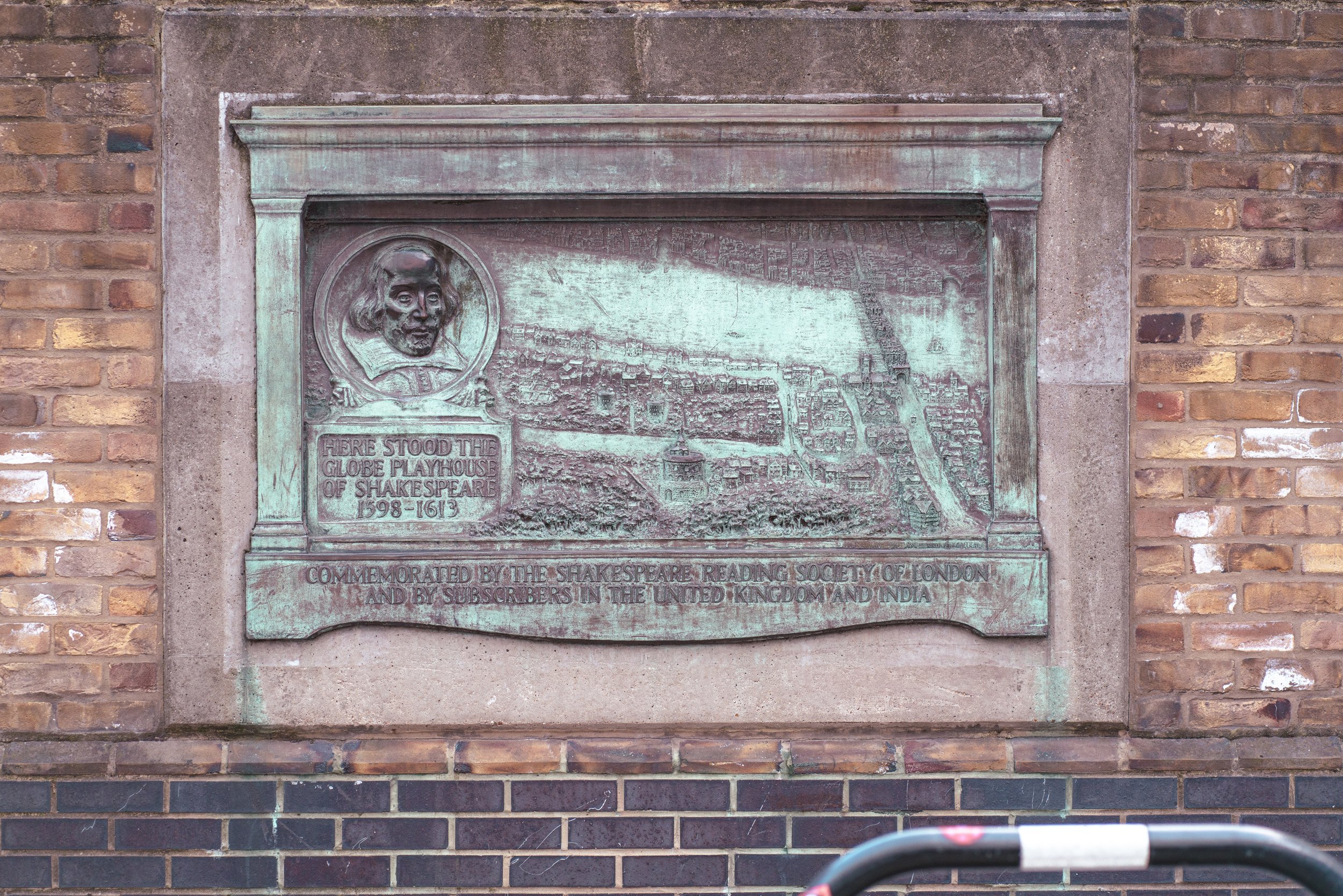
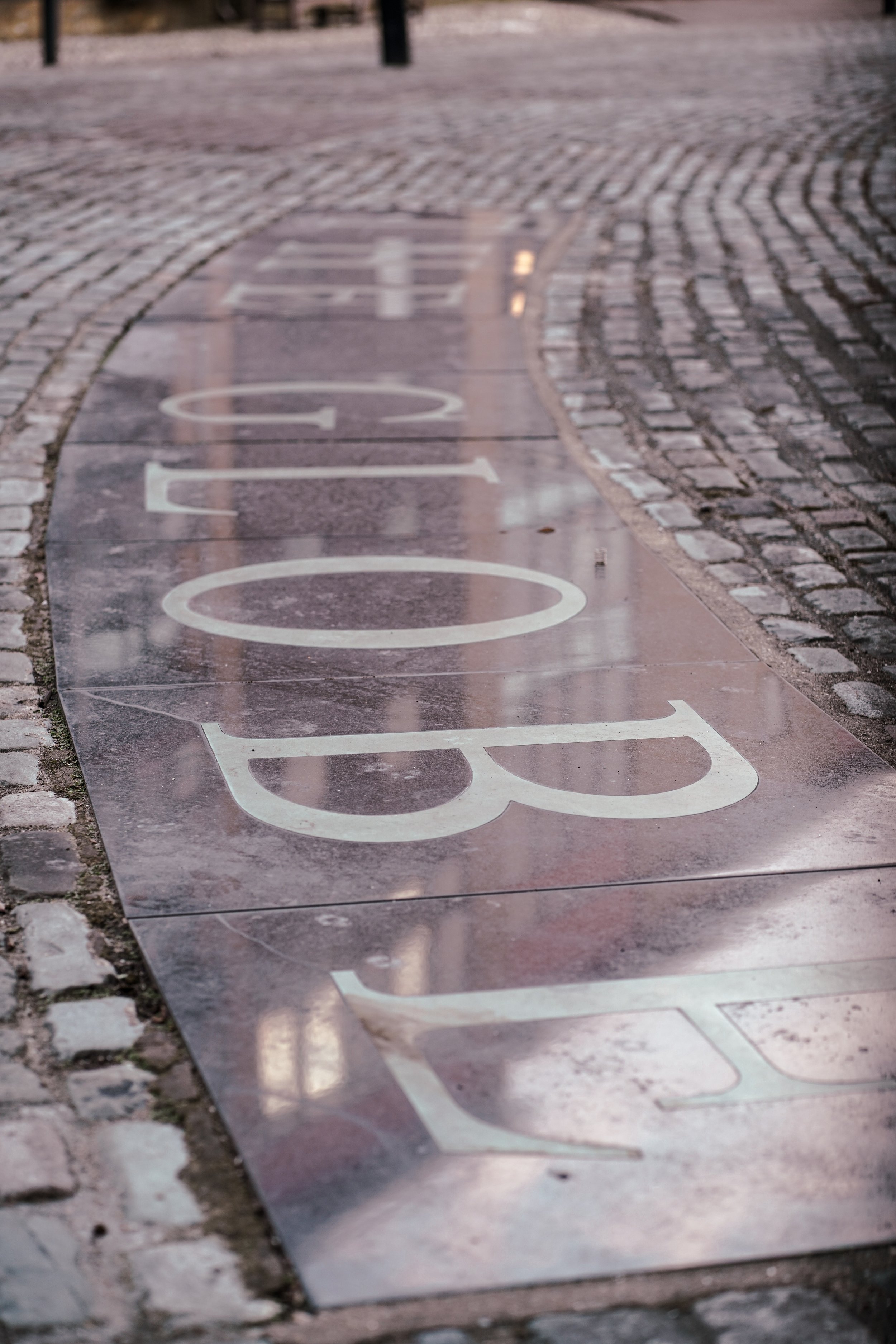
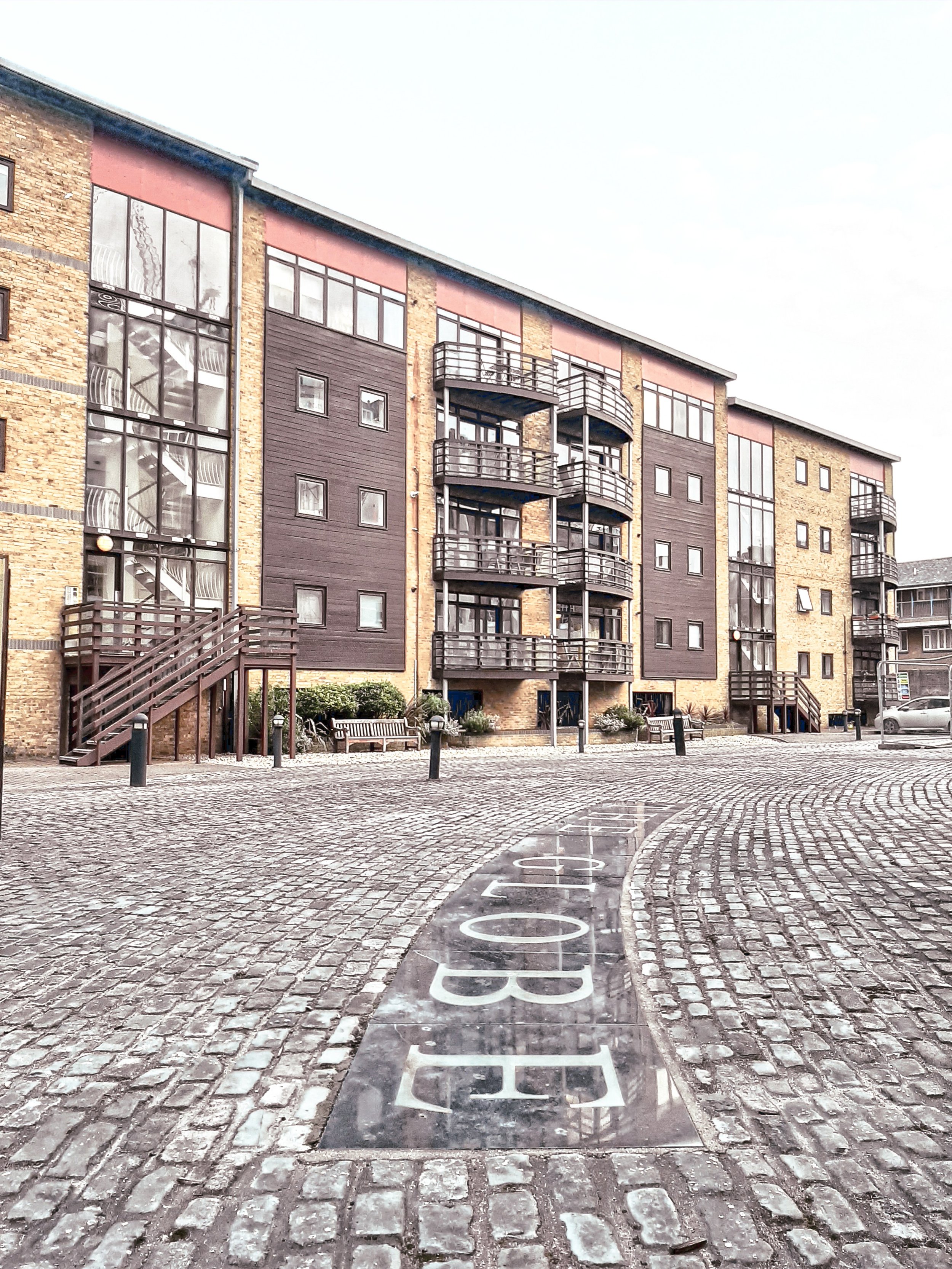
Let's head now to the south, towards one tricky heritage site. Actually, two heritage sites in one spot.
At 67–70 Anchor Terrace, the 17th-century foundations of the original Globe Theatre are covered by residential houses.
This unique historic structure is stuck there for real as the buildings above are also listed (protected). That makes them untouchable.
The precise locations of the foundations of the old theater are marked only in places where excavations were permitted. You can see them at the back of the private property near Park Street.
12. The graveyard of... prostitutes (Cross Bones Graveyard)
(link to the location)

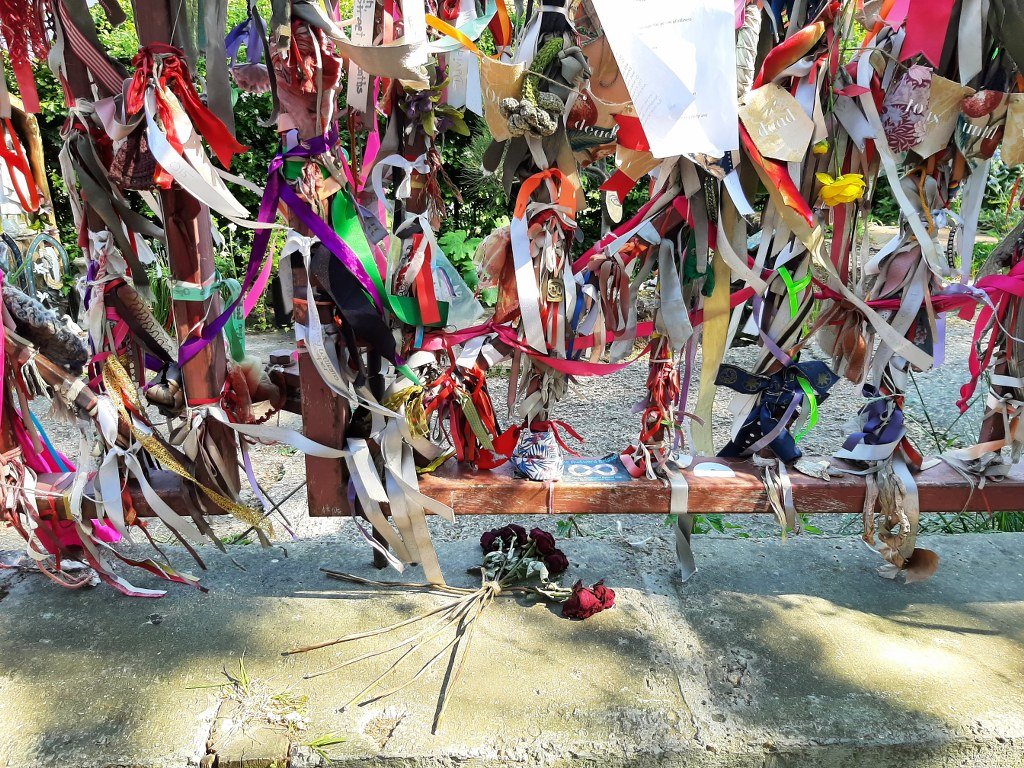
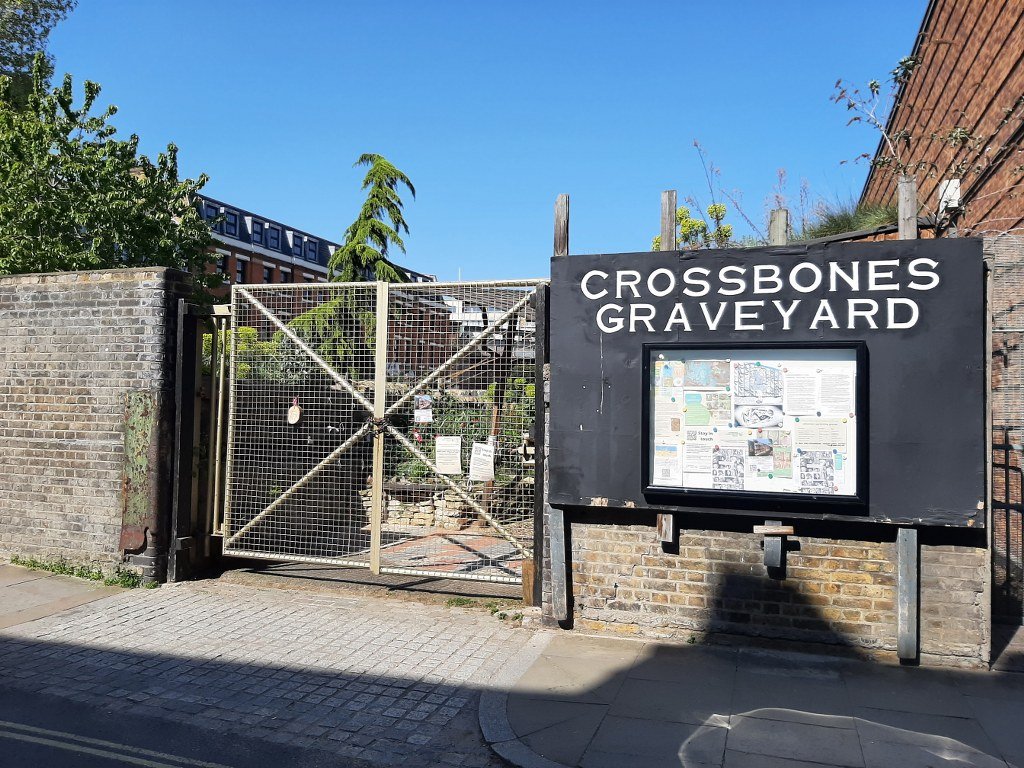
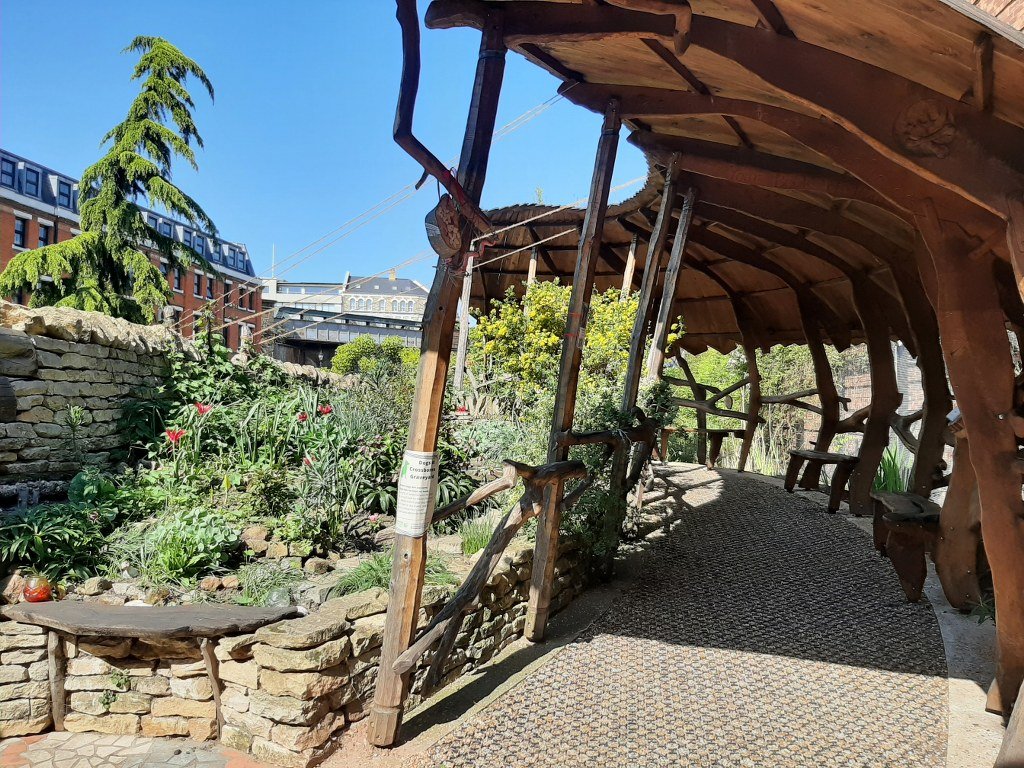
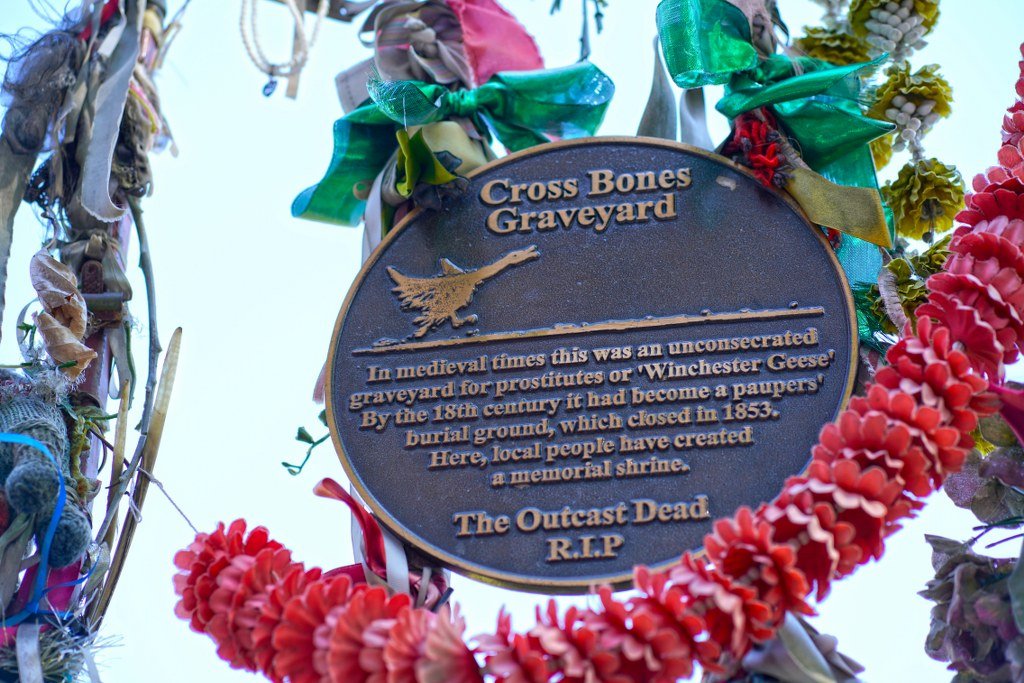
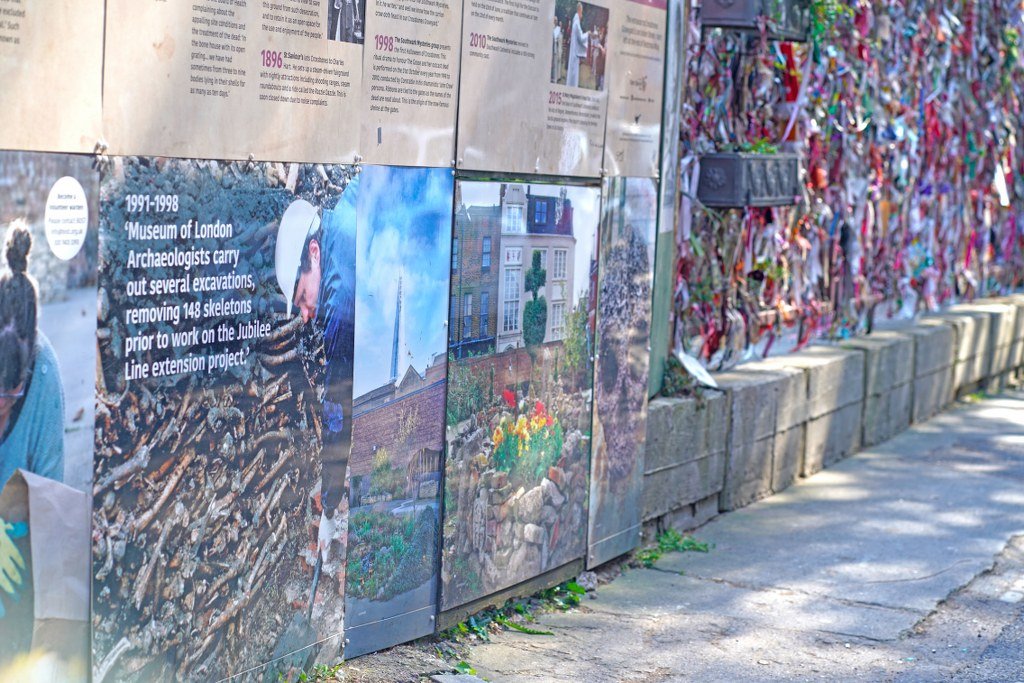
Cross Bones Graveyard is an unusual place.
A small piece of ground only steps away from London Bridge.
An unconsecrated burial place of an estimated 15 thousand London social outcasts from various periods, including medieval Winchester Geese-the prostitutes, licensed by mentioned earlier Bishop of Winchester.
They were denied Christian burial.
Caring locals are determined to remember those once very much rejected.
Someway they managed to win the battle with the developers keen to build new houses and offices on this well-located piece of ground.
13. The George Inn
(link to the location)
The George Inn, London Bridge (2022). Photography: Zuzanna/WalkMeBlog
The last point on this London walk (and its perfect end) is the George Inn.
350-years-old pub just around the corner from London Bridge and the Shard.
A great place to relax after a walk.
INTERESTING FACT: "LONDON BRIDGE IS DOWN"
Another chapter had been recently added to the history of the London Bridge area.
A detailed plan of the funeral of Queen Elizabeth II was prepared just after her coronation in 1953.
According to this plan, as soon as Queen dies, the Prime Minister of the United Kingdom should receive a phone call from the Palace.
The conversation will begin with the words “London Bridge is down".
The plan was named Operation London Bridge and included the details of the public announcement of her death, national mourning, and her state funeral.
And as we all know, it has been executed very well.
Did you enjoy this post?





















